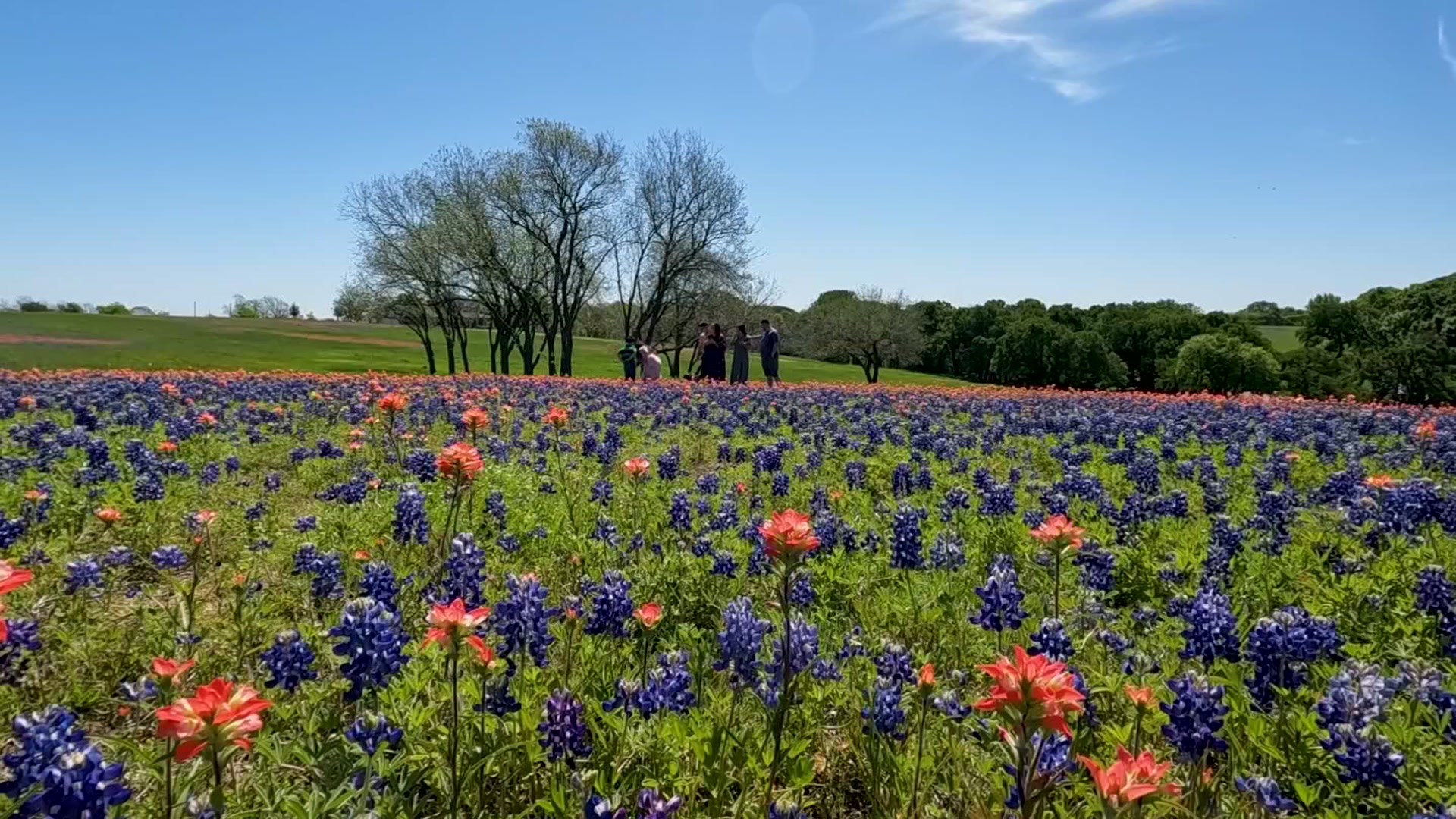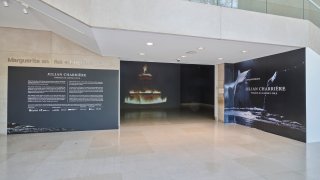
For four decades, the Dallas Museum of Art has introduced emerging artists through its Concentrations series, often giving an artist their first US solo museum exhibition. With Concentrations 63: Julian Charrière, Towards No Earthly Pole, now on view through August 8, the museum is highlighting the work of a French-Swiss artist whose view of mankind’s role in the environment is intriguing and challenging.
“Charrière’s work is as thought-provoking as it is seductive. His practice, rooted in film, sculpture, and photography, matches technical and formal achievement with conceptual rigor that situates the viewer in a rich network of scientific, art historical, and sociopolitical references. Although his art takes us on a journey to the ends of the earth and through geologic and historic time, the result is our increased awareness of interdependence and the wide-reaching impact of our actions in the here and now and on future generations,” Dr. Anna Katherine Brodbeck, the museum’s Hoffman Family Senior Curator of Contemporary Art and curator of this exhibition, said.
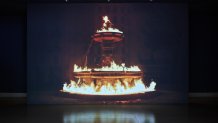
This exhibition features five bodies of work, serving as the Berlin-based artist’s first US solo museum exhibition. The exhibition begins with And Beneath It All Flows, a video of a neoclassical fountain in Lugano, Switzerland that Charrière set on fire. Water continues to flow as flames dance around the elaborate architecture of the fountain.
Get DFW local news, weather forecasts and entertainment stories to your inbox. Sign up for NBC DFW newsletters.
This dramatic combination of these opposing elements represents man’s taming of water and fire, signifying the beginning of civilization. “We domesticated fire in order to take over the world as a species and we domesticated water,” Charrière said as he noted the raging wildfires in California and rising sea levels. “We see today that it isn’t working. It’s about the danger of things getting out of control and we need to respect and engage in different ways.”
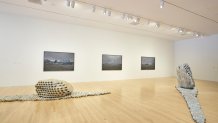
For Not All Who Wander Are Lost, Charrière uses glacier erratics to comment on the peril of human interaction. “Erratics are truly boulders that have been misplaced or moved by ice glaciers and are scattered across the landscape to which they do not belong,” Charrière said. “They are kind of like cultural ambassadors for places within landscape.”
The Scene
Using core drilling, a technique used to extract natural resources, Charrière perforated the erratics. With each extraction, the imposing boulders become more fragile. Charrière lays the removed rods of erratic rock on the floor to represent the erratic’s migration.
In refrigerated cases, it is easy to mistake Tropisme for plants frozen during Texas’ February winter storm. These unusual works are orchids, cactuses and ferns preserved by cryogenic freezing. “They have been dipped in liquid nitrogen and then I draw this ice layer on top of the plant,” Charrière said. “It renders the plant timeless.”
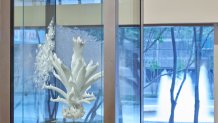
Charrière selected these plants because they are still recognizable from the Cretaceous period when dinosaurs’ reign on this planet ended.
The Blue Fossil Entropic, a series of photographs, features Charrière perched on Icelandic icebergs with a blow torch in hand in a futile attempt to melt the massive piece of ice. The photographs are reminiscent of 19th century Romanticism with a singular man taking on nature. The iceberg dwarfs Charrière, suggesting nature’s resistance as global warming encroaches.

The exhibition culminates with Towards No Earthly Pole, a 102-minute film from which the exhibition’s name is derived. The title of the film is inspired by Alfred, Lord Tennyson’s epitaph of Sir John Franklin, a British explorer who died during an expedition of the Arctic in 1847. The film is a modern comment on the impact of exploration and a complement to Frederic Edwin Church’s The Icebergs, a painting in the museum’s collection.
Charrière filmed in Greenland, Iceland and the Alps with a drone floating slowly above the glaciers. The footage was taken at night, giving a different view of the iconic glacial landscape so familiar to environmentalists, tourists, and artists. “I wanted to try to find a way to create an alternative imagery for the place,” Charrière said.
Charrière layers the footage from the different glaciers to create a dream-like landscape of undulating snow, icy pools and deep crevasses illuminated by stark artificial light. “When flying the drone, you actually can reveal the topography, the plasticity of these different places,” Charrière said.
The film is a hypnotic meditation about the power and vulnerability of nature as climate change reshapes a landscape so many assume is eternal.
Learn more: https://dma.org/

